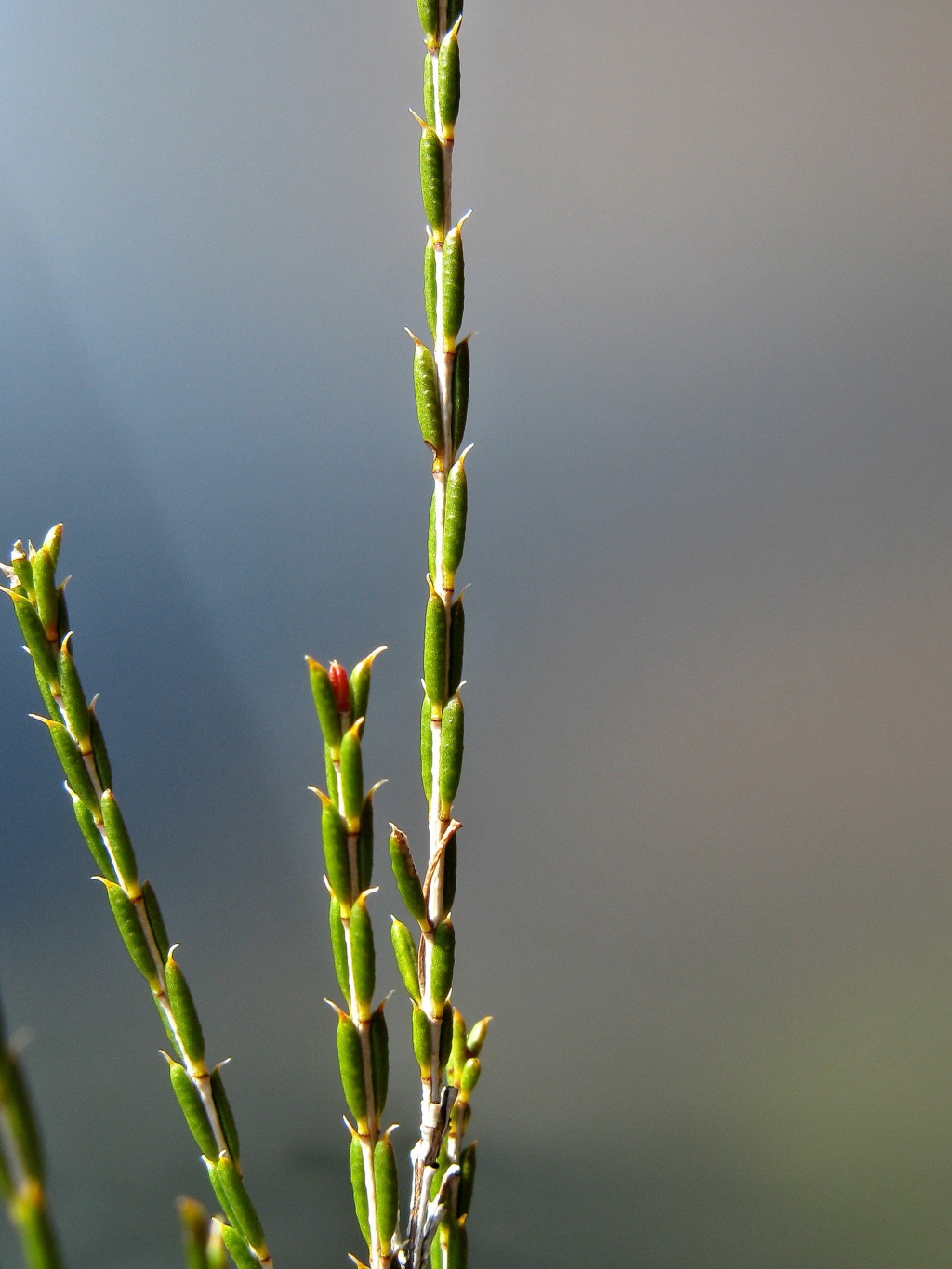Hysterobaeckea
(Nied.) RyeGlabrous shrubs, often broom-like. Leaves opposite, appressed (in Victoria), upper surface grooved; shortly petiolate. Inflorescence axillary, usually single-flowered. Flowers white or pink (in Victoria), rarely yellow, pedicellate; bracteoles usually deciduous; calyx 5-lobed, persistent in fruit; petals 5, free, orbicular; stamens 9–28, in 1 row, only opposite sepals (in Victoria), shorter than petals; anthers distinctly gland-tipped, geniculate, dehiscing basally by short slits; ovary half-inferior, 2- or 3-celled. Fruit a loculicidal capsule, base and sides fused to the hypantium, dehiscent by terminal radial slits; seeds numerous, flat-sided, backs rounded, hilum small.
3 species from western and southern Australia (many more unnamed taxa in WA).
Hysterobaeckea is closely allied to Sannantha. Both genera were placed in Babingtonia Lindl. by Bean (1997), and in the absence of a suitable combination being available at the time, Hysterobaeckea (Babingtonia) behrii remained in Babingtonia following the segregation of Sannantha (Wilson et al. 2007). However, both Hysterobaeckea and Sannantha differ from Babingtonia in the anthers dehiscing basally and having a distinct connective gland. Babingtonia sensu stricto is endemic to Western Australia. Hysterobaeckea can be distinguished from Sannantha by the upper surface of leaves having a distinct groove, the flowers being solitary (rarely 2 or 3 flowers per axil), the fewer, deciduous bracteoles, and the anthers that are dehiscent by a relatively longer slit and the connective gland being longer than the anther locule.
 Spinning
SpinningBean, A.R. (1997). Reinstatement of the genus Babingtonia Lindl. (Myrtaceae, Leptospermoideae). Austrobaileya 4: 627–645.
Wilson, P.G.; Heslewood, M.M.; Quinn, C.J. (2007). Re-evaluation of the genus Babingtonia (Myrtaceae) in eastern Australia and New Caledonia. Australian Systematic Botany 20: 302–3018.


